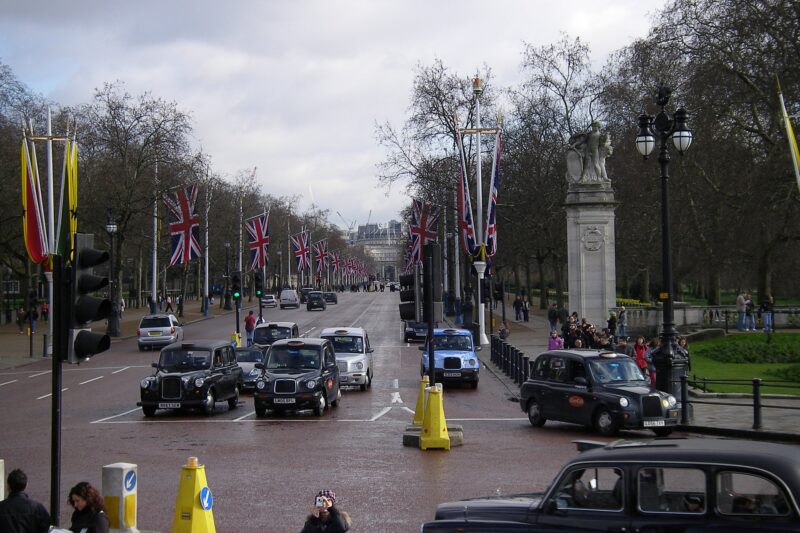Being a taxi driver can be very rewarding and many people spend their careers enjoying life on the road.
As well as getting to meet new and interesting people every day, no two journeys are the same as they take fares to different locations in their trusted taxi, which is not only a tool of the trade, it is their office, their rest area and often where they grab a snack and a drink when they get a chance.
But, like any career, it is something people have to be passionate about in order to go the distance – and there are ups as well as downs.
Commercial insurer Zego found that 35% of taxi drivers love their job, with 37% considering it “very rewarding”. Many of these drivers will have the perfect car for the job – something that is practical, comfortable and they enjoy driving. At the other end, just 2% say they actively dislike the role and it is just a way to pay the bills. These are less likely to care about what they are driving and are probably counting down until the end of each shift.
For those loving life as a taxi driver, meeting new people was top of the list with 63%. Many also enjoy flexible working hours (24%), and 22% enjoyed not being stuck in an office or staring at a computer screen all day.
As we know, there is far more to it than simply driving a fare from one place to another. Taxi drivers often have to wear every hat in their business, from driver to customer services, marketing, business manager, and even accountant.
Social aspects to taxi driving
Taxi drivers not only have to be safe drivers who have an interest in cars and actually enjoy driving, they have to be able to deal with people at their best or their worst, whether it is euphoric sports fans celebrating their team’s victory, or dealing with rowdy drunks after a night out.
But, unlike any other career, it can be extremely rewarding and taxi drivers get to meet people from all walks of life.
In a typical year, a taxi driver will drive 46,500 miles as they pick up 5,750 passengers and listen to 13,250 songs on the radio. It’s worth making sure the driver’s seat is comfy and you’ve got a quality radio or sound system to keep you company.
Long haul journeys and shortages
And, research from commercial insurance provider Zego has found that as they travel the distance of two return trips from London to Sydney, they typically visit 17 different cities during the course of their work, and guzzle around five cups of tea a day – or 1,170 cups a year.
Like other industries that involve socialising and close contact, taxis were hit hard by the pandemic and subsequent lockdowns, with many drivers struggling with the financial burdens of owning a cab they had to maintain and pay taxi insurance on, but which they couldn’t use to earn a living.
As restrictions lifted and people went about their everyday lives again, demand for taxis soared, but there was a shortage of taxi drivers as some opted for different careers while others were waiting for the licensing backlog to clear.
New directions for taxi drivers
For those that did leave, many followed the surge in demand for deliveries and swapped their cabs for vans or even bikes to deliver food. Working from home and the convenience of deliveries have changed the way people buy things and it is one trait from the pandemic that appears to be booming.
Taxi drivers who returned to their cabs have also noticed that things have changed since the pandemic.
Many have noticed a darker side emerging and now find they are dealing with aggressive customers 21 times a year on average – once every two weeks.
More than half (52%) have had customers try to get out without paying their fares, while 56% have had encounters with people being drunk and disorderly in their car.
Zego CEO Sten Saar said: “Taxi drivers are, in many ways, the backbone of Britain.
“It has been reported that the first Hackney Carriage for hire was in London as far back as 1605, and ever since then, cabbies have been providing an essential service on our roads.
“Taxi drivers, of course, need driving skills, but they also need a lot of patience and to be good with people, too. It’s fascinating to see just how many people they talk to each year.”
Perhaps trying to avoid the nastier side of the industry, many drivers are now working days instead of nights.
Zego found that despite many people using taxis primarily to get home after a night out, more drivers work during the day (34%) than the evening (14%).
Just over half (52%) try to do a bit of both, as 54% consider driving to new destinations one of the things they enjoy most about their job.
Drivers are also doing more long journeys, with many taking on airport trips 18 times a month – 216 over the course of a year, the OnePoll.com figures found.
Sten added: “Being a taxi driver is a job unlike any other.
“It’s not just about driving, it’s about being a part of your town or city, and about being a part of the community.
“We’d like to raise a toast to the cabbies of the UK, and thank them for all their hard work and dedication.”
How have things changed for you since the pandemic?


